

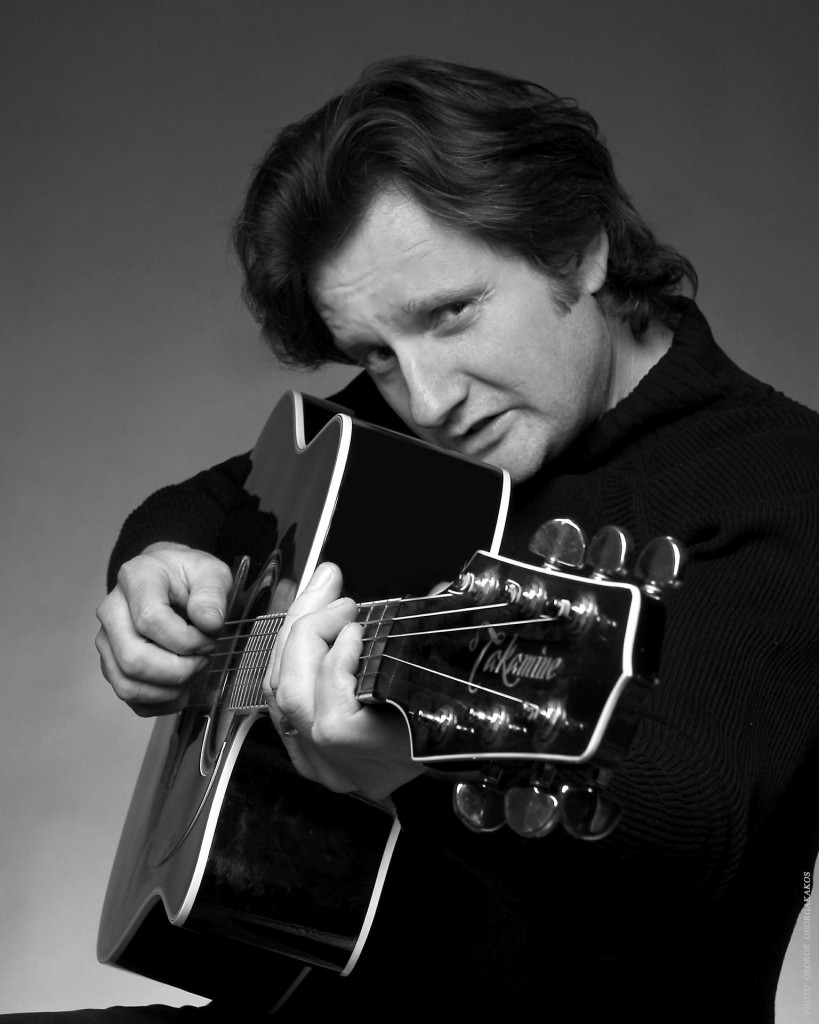 Brett Ryan has always had the invigorating power of music flowing through him.
Brett Ryan has always had the invigorating power of music flowing through him.From the first time he heard his father’s weekend rock ‘n’ roll band rehearsing in the family basement, Ryan has been drawn to the sounds and the rhythm of popular music.
Over the course of seven polished solo albums and hundreds of live gigs, the award-winning musician and songwriter has explored the sounds in his heart and his head.
His new album, Love Simplified (Bratt Productions), is a joyously fitting bookend to a trio of albums recorded over the past seven years that have reignited his career and his love for making music.
Since his early days busking the downtown streets of hometown Halifax in the 1980s, Ryan has honed his skills as a songwriter and a passionate performer. His music has taken him on a roller coaster— from rootsy folk-rock through commercial pop-rock to soul-satisfied rhythm & blues.
Over the course of his 25-year career, he has won industry accolades including East Coast Music Awards and songwriting competitions, signed a major recording contract, recorded with some of the most successful studio musicians in the industry and placed numerous songs in Top Ten radio charts around the world.
Ryan’s love for music germinated in the small family home in Fairview, Nova Scotia. His father was a drummer for the Ebb Tides, a part time band back in the ‘60s, covering the soul and pop hits of the era.
The family lived in a modest bungalow with a head-banging basement, just 5 feet high with a dirt floor, which doubled as the practice space for his dad’s band.
He’d often hear the Ebb Tides practicing at night, jamming the hits of the Beatles, James Brown, Wilson Picket, Motown and Stax, all sweet sounds of ‘60s music rolling up through the floor joists.
“I started tinkering with music back then; started playing drums. (Brett still has his father’s vintage kit, a set of 1962 Ludwig Oyster Black drums just like Ringo’s famous tubs — reputed to be the second set of Ludwigs ever to arrive in the Maritimes.)
The Ryan family would often gas up the family station wagon and head south on vacations, destined for Memphis or Nashville, the Mecca of music destinations.
By age 14 he also began to play guitar and electric bass to accompany a friend who had started a band. By high school, Brett was performing in talent shows and coffee shops, but more importantly had begun writing original songs, often teaming with his longtime friend Ron Foley Macdonald. That was the beginning of a songwriting partnership that would endure for 30 years.
Through the late-‘80s, Ryan anchored the Halifax alternative pop-rock trio Little Ministers. The polished contemporary sound of the band built a solid following locally, supported by the release of the band’s debut — and only — album, ”American Modern”.
Little Ministers became the first indie band to achieve a Top Ten hit album in Atlantic Canada which helped attract some industry attention. However, just as it was ready to break out of the region, internal dissent led to the collapse of the band.
It would be the first of many musical near misses for Ryan.
After Little Ministers unwound, Ryan went back to working on solo acoustic songwriting and busking. He dug back into Dylan’s Blonde on Blonde and Van Morrison’s Moondance album, a set of classic soulful songs that would influence his career for the next 25 years.
Singing for 7-8 hours a night on Argyle Street in downtown Halifax, often in sub-zero temperatures, he quickly honed his soulful vocals.
One of the formative events in the regional music industry also marked Ryan’s coming out as a solo performer. The inaugural Maritime Music Awards (which would eventually evolve into the East Coast Music Awards) was organized in 1989 at the Club Flamingo in downtown Halifax. Ryan was booked to perform on the show, a casual event that brought together musicians, industry insiders and the media.
When a well-known artist was overcome with stage fright and balked at the opening slot, the plucky Ryan stepped up, slung his guitar over his shoulder and took the stage in front of the crowd, making him the first performer ever on the regional music awards.
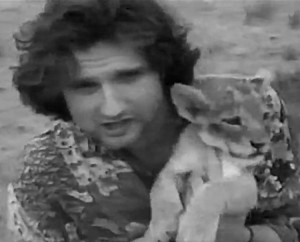 On the strength of that show, Ryan started to create some buzz for his rugged folk-rock sound. He began to assemble a band, which would soon include guitarist James Logan who continues to perform with him still, almost 25 years later.
On the strength of that show, Ryan started to create some buzz for his rugged folk-rock sound. He began to assemble a band, which would soon include guitarist James Logan who continues to perform with him still, almost 25 years later.
The following year, Ryan climbed back on the ECMA stage to accept his first music award for Best Unrecorded Artist in Atlantic Canada. Most significantly, he met producer Terry Brown, an ex-pat Englishman who had produced rock albums for Rush, Cutting Crew and Blue Rodeo. That relationship would endure through several upcoming album projects.
“I met Terry in an elevator at that show.” The pair exchanged mutual admiration then Brown invited Ryan to send him a tape of his songs, starting a professional relationship that continues to this day.
Ryan later entered local rock radio station Q104’s Battle of the Bands, electrifying the final competition performance on Halifax’s Citadel Hill in front of 40,000 fans. The singer’s powerful stage presence netted him the top prize, taking home some much-needed cash and recording time in a professional studio.
As his songwriting skills sharpened, he began to dig into more topical subjects, including Justice Denied, a powerful original song about the trials of Donald Marshall, a Nova Scotia Mi’kmaq who had been wrongly convicted of murder.
All this recognition was beginning to build toward a full-time music career. It was a period when rock and pop music were still ruling the airwaves and artists were still selling records.
Pairing with producer Terry Brown for the first time, Ryan went into Halifax’s Solar Audio to record The Answer’s Electric (1991) in just three weeks. Most of the songs were written and ready before the session started, with one notable exception. Ryan hastily wrote the title track on the day the recording started, and it went on to become the most successful track on the breakout album.
The album was released independently on Ryan’s own Bratt Productions label on January 16, 1991. Ryan recalls that night, “coincidentally we were performing What Are We Fighting For, the single from the new record, the exact moment the Americans starting carpet bombing Bagdad.”
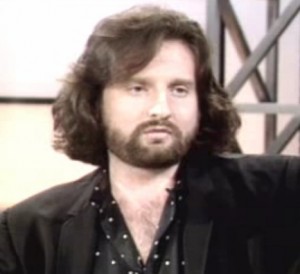 The album received plenty of airplay on Q104. A month later, at the East Coast Music Awards, Ryan won Male Vocalist of the year, rocked an industry showcase and the ball really started rolling.
The album received plenty of airplay on Q104. A month later, at the East Coast Music Awards, Ryan won Male Vocalist of the year, rocked an industry showcase and the ball really started rolling.
Attic Records, then an influential indie label based in Toronto, was at Ryan’s showcase. Brian Allen, Attic’s head of A&R, approached Ryan after the performance about signing with Attic. A week after the awards show, he penned a seven-album deal with the Toronto label, joining other prominent Canadian artists including Haywire, Maestro Fresh Wes, Teenage Head, Triumph and Jesse Winchester.
“That deal signaled I had arrived. I couldn’t help thinking I had made it! But really I’d only just been invited to the Show.”
A few months later, Attic repackaged, re-mastered and rereleased The Answer’s Electric with distribution through international giant A&M. With the wider reach of a distributed label, the album began to get some overseas airplay, including placing top ten singles in Australia, Japan, Holland, Belgium and Canada.
The title track went Top 20 nationally and cracked the Top Ten chart in Atlantic Canada. A video was shot and released for Like A Jester, though no video was ever made for the title track, which was the best-selling hit on the album.
Attic was soon looking ahead to the next record. At the same time, it was winnowing down its roster of signed artists and delayed the recording of Ryan’s all-important follow-up solo disc. Heading out the door were established Attic artists including Rita Coolidge, Weird Al Yankovic and Canadian rapper Maestro Fresh Wes to make room for Ryan and fellow East Coasters Haywire.
Just as the momentum seemed to be building toward a solid crack at a music career, the wheels began to come off.
Frustration set in as time slipped by. A full year after signing, there still was no action on a new album; Ryan felt his success grinding to a halt. So, acting on the dubious advice of a Halifax entertainment lawyer, he sued Attic to get out of the contract, The lawyer was confident he’d be able to land Ryan another major label and keep up the momentum The Answer’s Electric had started.
It didn’t work out that way. The tightly knit Canadian music industry circled the wagons and Ryan was effectively black-listed for standing up to the label. No label would talk to him or his management, despite his radio success at home and in foreign markets.
The excitement and optimism of a year earlier was snuffed out, another hard lesson of carving out a living in the music industry.
So Ryan hunkered down again with Terry Brown in 1993 and began to map out the next record, which they’d produce without any label support, marketing or the prospect of widespread distribution.
In the aftermath of the Attic debacle and with Ryan’s personal life in disarray, the new album The Babylon Mask (1993) was shaping up as a dark and dense album.
They rented an 8000 square foot mansion in the picturesque ocean-side community of Chester on Nova Scotia’s South shore, moved in a truckload of guitars, amps and recording gear and spent the next four months tracking the new songs. Some band members also moved in, including keyboard ace Bill MacAulay and drummer Sean Kilbride.
“It was a really enjoyable record to make. Terry and I had a fabulous time. We’d get up at 11 in the morning, have lunch at the local pub then record from noon till three in the morning.”
They anticipated this album would recreate the success started with The Answer’s Electric and get Ryan’s career back on track.
“We thought it would go boom! Instead it went pop, fizzle….”
The first single was And Love Resounding, which went Top Ten in Atlantic Canada. Two videos were released from the album, both directed by the talented videographer Mike Clattenberg, who would later helm the hit TV series Trailer Park Boys.
Without a publicity machine behind the release, it was a slog to get any national radio play or press for the album. It didn’t help that it was a big-sounding album, awash in electric guitars and sequencers at a time when the Canadian charts were dominated by Whitney Houston, Janet Jackson and Mariah Carey. There was simply no commercial appetite for the dense and complex sound of The Babylon Mask.
Coming through that challenging period pushed Ryan to return to the simpler joys of making music, turning away from epic sounding guitars and synthesizers in favor of more organic acoustic instrumentation.
“The Babylon Mask needed a bank of computers. I just wanted to boil it back down to the basics again.”
He and Macdonald were still writing songs, but moving toward more pop-oriented and accessible music.
With some new songs, new enthusiasm and a new strategy, he recorded the rootsy EP A Place At the Table (1996), which included for the first time a horn section. Self- produced at Solar Audio, the EP marked a new direction for Ryan and was a departure from the heavier sound of his two previous works.
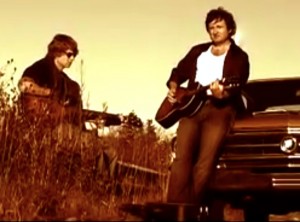 The album was launched at Halifax’s Economy Shoe Shop and was well received by regional radio, netting two Top Ten singles and was selected one of the Top Ten albums of the year by local music journalist Stephen Cooke.
The album was launched at Halifax’s Economy Shoe Shop and was well received by regional radio, netting two Top Ten singles and was selected one of the Top Ten albums of the year by local music journalist Stephen Cooke.
While promoting A Place at the Table in France, Brett and his girlfriend Lara, on the spur of the moment, decided to rent a car and drive to Italy where on the 24th of January, 1997 at the Michelangelo designed Plaza Campidoglio in Rome they were wed.
Riding the modest success of A Place at the Table Ryan reunited with Terry Brown to make Escaping Gravity (1998), a full production pop-rock record. Most of that album was recorded in a home studio in Ryan’s basement. He called in some favors; Nick Van Eede (Cutting Crew) sang on the album, Kenny Greer (Red Rider) contributed guitar and Larry Gowan provided piano tracks. Brown also introduced Ryan to Canadian keyboardist/arranger Doug “Dr. Music” Riley who wrote rich string arrangements for the songs.
Escaping Gravity was a lush pop album, without the density of The Babylon Mask and much more accessible to radio. The album received enthusiastic reviews as well as an overwhelming amount of radio play in the region.
Astronaut Song, A Place in the Universe and Shot Heard Around the World all charted Top Ten on radio. But once again, without the management or label support to market the album properly, the momentum trailed off quickly and Escaping Gravity never saw the national and international commercial success it truly deserved.
Disappointed by the inability to recapture an international audience with Escaping Gravity, Ryan decided to step away from the music business and focused on raising his growing family. About the same time, as his music career was stalling, Ryan began to get involved in the booming Halifax real estate market, investing in and renovating old Victorian buildings which were in abundance. In the coming years, he’d find great success in that market.
In 2001, Ryan bought a stately unfinished home outside of Halifax. He handled all the interior carpentry work himself to get the home ready to move in.
Ryan’s focus shifted away from the music business, an industry that was clearly in disarray. The conventional music model of large international labels and bricks & mortar record stores had imploded with the advent of home recording, shifting musical tastes and digital downloading.
It would be the better part of a decade before Ryan again got the urge to get back in a recording studio.
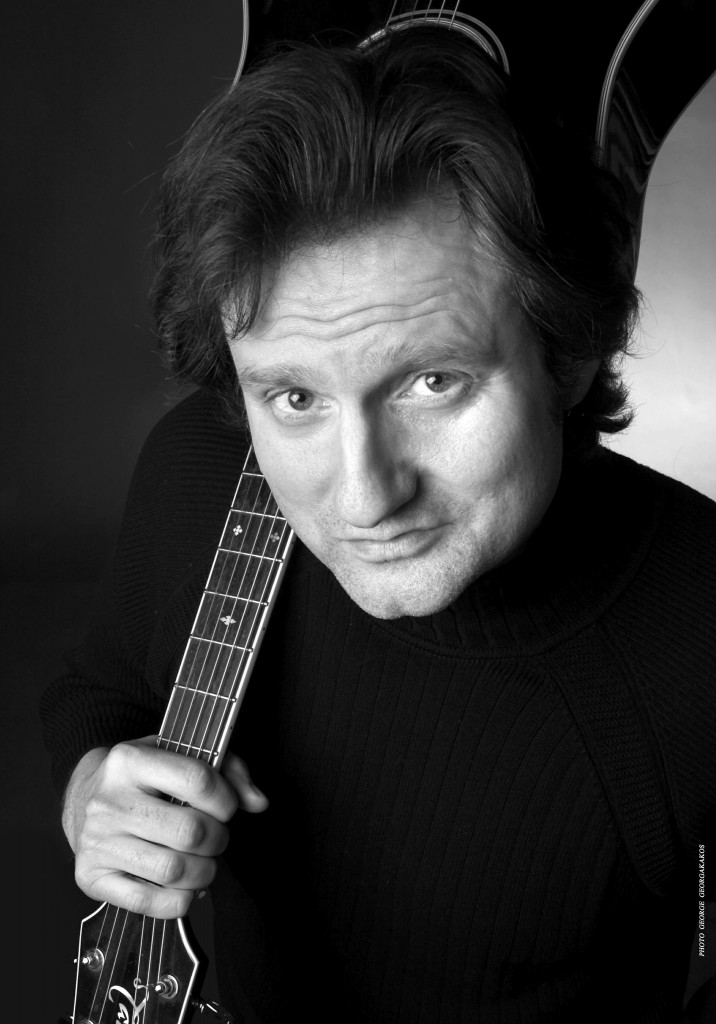 Finally, it was divine intervention that pulled him back to making music. Ryan had been buying properties around Purcell’s Cove outside Halifax, which included the former St. Cecilia Catholic Church perched on a hill overlooking the ocean. Though it hadn’t hosted a congregation in decades, the modest building still had a gracious and serene air about it.
Finally, it was divine intervention that pulled him back to making music. Ryan had been buying properties around Purcell’s Cove outside Halifax, which included the former St. Cecilia Catholic Church perched on a hill overlooking the ocean. Though it hadn’t hosted a congregation in decades, the modest building still had a gracious and serene air about it.
It soon became Ryan’s muse.
Ryan began in earnest to rebuild the quaint community church, initially with the idea of creating a unique bed and breakfast. He started by painstakingly gutting the entire interior and replacing it with spectacular recessed oak paneling and 27 elaborate stained glass windows crafted by his Father Donald F. Ryan, who himself was a gifted artisan. To top it off he commissioned an art school graduate Sasha Nelson to paint a Sistine chapel-esque mural on the entire ceiling.
During the course of renovating, something completely unexpected happened. Ryan found himself humming melodies and composing lyrics. Somehow the walls seem to speak to him triggering the whole writing process again.
Raising a few eyebrows at home, Ryan began effortlessly penning new songs with a rekindled energy and enthusiasm not seen in years. Perhaps it was a hidden longing inside or maybe the quiet guidance of the patron saint of music St. Cecilia herself nudging him back into songwriting.
Instead of a bed and breakfast he abruptly switched gears and decided to transform the church into St. Cecilia Studios, a gorgeous audio recording facility near the ocean.
The studio had an enchanting atmosphere, and quickly became an inspiring and joyful place to record music, not only for Ryan, but for other well known artists as well.
Ryan began to map out what would be his return to the East coast music scene.
His first call was to Doug Riley.
Doug “Dr.Music” Riley was a true legend on the Canadian music landscape. Paul Shaffer called him “one of the top three Hammond B3 players on the planet”.
At the tender age of 22, he was recruited by Ray Charles to write all the horn arrangements and play B3 on arguably one of Charles’s most powerful R&B records Doing His Thing. (Doug went on to start Canada’s first 24-track studio in Canada with Producer Terry Brown).
Ryan sent Riley some tracks, and Doug fell in love with the soulful sound and was enthusiastically on board.
As the project began to pick up momentum, Ryan assembled an impressive rhythm section consisting of guitarist James Logan, bass player Jamie Gatti and drummer Dave Burton.
Riley suggested using an R&B back-up vocal trio he had worked with from Toronto, Sharon Lee Williams, Dione Taylor and Maddie LeRoy. Ryan instantly fell in love with their soulful gospel feel.
With the singers contributing back-up vocals, a powerful rhythm section, Riley adding keyboards and horn charts and a smoking horn section headed by Chris Mitchell and KennyMcKay, The St. Cecilia Sweet Soul Revival Band was born.
St. Cecilia Soul (2007) was a joyful reconnection with the uplifting spirit of music that had eluded Brett Ryan for nearly a decade. With the perspective that comes from being continuously knocked down and getting back up, Ryan wasn’t deluded by any hope for commercial success or music stardom.
“I had no delusions of grandeur; it was all about the simple joy of writing, recording and working with a fabulous band”.
Once again, despite his long absence, local radio got on board and played The Sound of the Rain extensively. It was a fresh and spirited sound on the radio, revisiting the uplifting vibe of retro soul music.
“I loved just making music again, for the sake of the music and not equating success with how much money I made”.
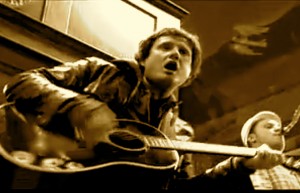 Unfortunately, just when things were riding high on the new-found success of St. Cecilia Soul, tragedy struck. After a performance at the Calgary Jazz festival while on a plane back home, Doug Riley died of a heart attack. The Canadian music scene had lost one of its greatest artists and The St. Cecilia Sweet Soul Revival Band had lost its legendary mentor and inspirational leader.
Unfortunately, just when things were riding high on the new-found success of St. Cecilia Soul, tragedy struck. After a performance at the Calgary Jazz festival while on a plane back home, Doug Riley died of a heart attack. The Canadian music scene had lost one of its greatest artists and The St. Cecilia Sweet Soul Revival Band had lost its legendary mentor and inspirational leader.
Ryan, as well as the rest of the Canadian music industry was devastated.
The next step in his musical journey came as a result of some performances in the heartland of American roots music. While in Memphis showcasing some of his new tunes, he met guitar legend Chris Leuzinger, a renowned Nashville session player. Leuzinger was best known for his longtime studio work with Garth Brooks, Hank Williams Jr., Randy Travis, Neil Diamond and many other internationally acclaimed artists.
Ryan and Leuzinger met after a performance, and quickly hit it off. Over the coming months, the pair reconnected several times in Nashville to record new original demos.
Then in April of 2008, Ryan was hit with yet another catastrophic personal blow.
A forest fire outside Halifax roared out of the woods and in a matter in minutes razed his home and all of the family’s possessions. Ryan, his wife Lara and their 3 children narrowly escaped through the thick smoke and flames with little more than the clothes on their backs. The shock and loss unhinged everything in their lives as they struggled to cope with the disaster.
Months later, when the chaos slowly began to subside, Ryan was in need of some “therapeutic musical distraction”. He called Leuzinger about getting together in Nashville to record a new St. Cecilia Sweet Soul Revival Band album. His Nashville session ace and good friend quickly lined up the band of Music City A-listers and they recorded Salvation Radio (2009) in Omni Sound Studios.
The songs were a celebration of the uplifting power of music, a tonic to get through the hard days and the happy days. Though dealing with some troubling life issues with songs like Faith, Hope and Delicate Strength and Dr. Music (an homage to Doug), the album received positive reviews and continued the renewed energy Ryan was feeling for making music.
In 2013, after a chance meeting with legendary keyboardist Jef Labes, who played on several VanMorrison records, including the seminal Moondance album as well as other artists such as Bonnie Raitt, Ryan was again inspired to get back to recording.
He and long-time songwriting partner Ron Foley Macdonald rekindled the creative synchronicity they’ve shared for 25 years and within a month, they had a dozen solidly crafted songs.
These 12 brand new tunes revisit the same gospel-tinged joy that Ryan tapped for his 2008 St. Cecilia Soul album. He put his new music in Labes’hands and the veteran musician was an instant fan, he quickly committed to joining in on the recording sessions.
Chris Leuzinger once again assembled Nashville’s A-list session players. Labes made the trip from California, and Ryan made the trek down once more from Halifax. For two magical sun-soaked southern days at Nashville’s Omni Sound Studios the eclectic all-star band laid down the bed tracks.
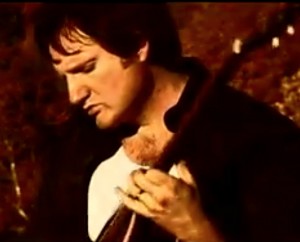 Ryan flew into Toronto once again to record the soulful backing vocals of Sharon Lee Williams, Dionne Taylor and Maddie Leroy, who all worked on the previous St. Cecilia Soul and Salvation Radio albums.
Ryan flew into Toronto once again to record the soulful backing vocals of Sharon Lee Williams, Dionne Taylor and Maddie Leroy, who all worked on the previous St. Cecilia Soul and Salvation Radio albums.
Back home at St. Cecilia Studios Ryan quickly polished off his vocals and the saxophone tracks.
The result is the third installment in what Ryan calls the “St. Cecilia Sessions”.
Listen closely, to the magical rhythms and counter melodies of Jef Labes that harken back to those classic days of Moondance. Feel the soulful grooves laid down by one of Nashville’s premier rhythm sections and savour the lasting influences of the “Doc”, from those formative first recording sessions at St. Cecilia Studios.
To quote one of Ryan’s own lyrics, ”I don’t know if these walls can talk but they sure as hell can sing”.
Most of all, enjoy Brett Ryan’s outstanding new album, Love Simplified.